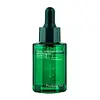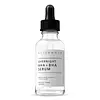What's inside
What's inside
 Key Ingredients
Key Ingredients

 Benefits
Benefits

 Concerns
Concerns

 Ingredients Side-by-side
Ingredients Side-by-side

Water
Skin ConditioningGlycerin
HumectantMethylpropanediol
SolventPhellodendron Amurense Bark Extract
Skin ConditioningPaeonia Lactiflora Bark/Sap Extract
Skin ConditioningScutellaria Baicalensis Root Extract
AstringentMentha Arvensis Extract
MaskingButylene Glycol
HumectantDipropylene Glycol
HumectantBetaine
HumectantHydroxyacetophenone
AntioxidantAcrylates/C10-30 Alkyl Acrylate Crosspolymer
Emulsion StabilisingArginine
Masking1,2-Hexanediol
Skin ConditioningXanthan Gum
EmulsifyingCitric Acid
BufferingPEG-60 Hydrogenated Castor Oil
EmulsifyingEthylhexylglycerin
Skin ConditioningCitrus Aurantium Dulcis Peel Oil
MaskingCitrus Aurantium Bergamia Fruit Oil
MaskingPelargonium Graveolens Oil
MaskingAllantoin
Skin ConditioningGluconolactone
Skin ConditioningMentha Piperita Oil
MaskingSqualane
EmollientButyrospermum Parkii Butter
Skin ConditioningLonicera Japonica Flower Extract
Skin ConditioningCaprylic/Capric Triglyceride
MaskingCeramide NP
Skin ConditioningAdansonia Digitata Seed Oil
EmollientHydrogenated Lecithin
EmulsifyingPentylene Glycol
Skin ConditioningMelaleuca Alternifolia Leaf Extract
PerfumingSodium Hyaluronate
HumectantTocopherol
AntioxidantCaprylyl Glycol
EmollientSodium Hyaluronate Crosspolymer
HumectantCeramide Ns
Skin ConditioningCeramide As
Skin ConditioningHydrolyzed Hyaluronic Acid
HumectantCentella Asiatica Extract
CleansingCeramide EOP
Skin ConditioningCeramide AP
Skin ConditioningHyaluronic Acid
HumectantHydrolyzed Sodium Hyaluronate
Skin ConditioningMadecassoside
AntioxidantMadecassic Acid
Skin ConditioningAsiaticoside
AntioxidantAsiatic Acid
Skin ConditioningLimonene
PerfumingCitronellol
PerfumingLinalool
PerfumingGeraniol
PerfumingWater, Glycerin, Methylpropanediol, Phellodendron Amurense Bark Extract, Paeonia Lactiflora Bark/Sap Extract, Scutellaria Baicalensis Root Extract, Mentha Arvensis Extract, Butylene Glycol, Dipropylene Glycol, Betaine, Hydroxyacetophenone, Acrylates/C10-30 Alkyl Acrylate Crosspolymer, Arginine, 1,2-Hexanediol, Xanthan Gum, Citric Acid, PEG-60 Hydrogenated Castor Oil, Ethylhexylglycerin, Citrus Aurantium Dulcis Peel Oil, Citrus Aurantium Bergamia Fruit Oil, Pelargonium Graveolens Oil, Allantoin, Gluconolactone, Mentha Piperita Oil, Squalane, Butyrospermum Parkii Butter, Lonicera Japonica Flower Extract, Caprylic/Capric Triglyceride, Ceramide NP, Adansonia Digitata Seed Oil, Hydrogenated Lecithin, Pentylene Glycol, Melaleuca Alternifolia Leaf Extract, Sodium Hyaluronate, Tocopherol, Caprylyl Glycol, Sodium Hyaluronate Crosspolymer, Ceramide Ns, Ceramide As, Hydrolyzed Hyaluronic Acid, Centella Asiatica Extract, Ceramide EOP, Ceramide AP, Hyaluronic Acid, Hydrolyzed Sodium Hyaluronate, Madecassoside, Madecassic Acid, Asiaticoside, Asiatic Acid, Limonene, Citronellol, Linalool, Geraniol
 Reviews
Reviews

Ingredients Explained
These ingredients are found in both products.
Ingredients higher up in an ingredient list are typically present in a larger amount.
Glycerin is already naturally found in your skin. It helps moisturize and protect your skin.
A study from 2016 found glycerin to be more effective as a humectant than AHAs and hyaluronic acid.
As a humectant, it helps the skin stay hydrated by pulling moisture to your skin. The low molecular weight of glycerin allows it to pull moisture into the deeper layers of your skin.
Hydrated skin improves your skin barrier; Your skin barrier helps protect against irritants and bacteria.
Glycerin has also been found to have antimicrobial and antiviral properties. Due to these properties, glycerin is often used in wound and burn treatments.
In cosmetics, glycerin is usually derived from plants such as soybean or palm. However, it can also be sourced from animals, such as tallow or animal fat.
This ingredient is organic, colorless, odorless, and non-toxic.
Glycerin is the name for this ingredient in American English. British English uses Glycerol/Glycerine.
Learn more about GlycerinWater. It's the most common cosmetic ingredient of all. You'll usually see it at the top of ingredient lists, meaning that it makes up the largest part of the product.
So why is it so popular? Water most often acts as a solvent - this means that it helps dissolve other ingredients into the formulation.
You'll also recognize water as that liquid we all need to stay alive. If you see this, drink a glass of water. Stay hydrated!
Learn more about WaterXanthan gum is used as a stabilizer and thickener within cosmetic products. It helps give products a sticky, thick feeling - preventing them from being too runny.
On the technical side of things, xanthan gum is a polysaccharide - a combination consisting of multiple sugar molecules bonded together.
Xanthan gum is a pretty common and great ingredient. It is a natural, non-toxic, non-irritating ingredient that is also commonly used in food products.
Learn more about Xanthan Gum